Get PeakVisor App
Sign In
Search by GPS coordinates
- Latitude
- ° ' ''
- Longitude
- ° ' ''
- Units of Length

Yes
Cancel
Share ×

Scan the QR code and open PeakVisor on your phone
❤ Wishlist ×
Choose
Delete
Valbona Valley National Park is a protected area located in northern Albania. It protects parts of the Albanian Alps as well as the valley of the Valbona River and its waterfalls. If you’re looking for a park where you can breathe fresh air and enjoy unbelievably high mountains, Valbona Valley National Park is the place to be. There are 54 named mountains in the park, the highest and the most prominent of which is Maja e Jezercës (2,694 m/ 8,838 ft).
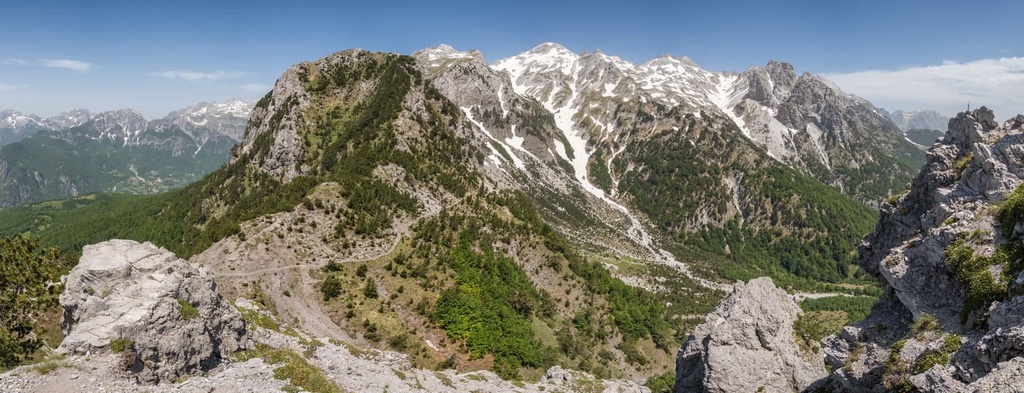
Valbona Valley National Park covers an area of 80 sq. km (31 sq. mi) in northern Albania. It is home to a major river, mountains, waterfalls, and stunning rock formations. Valbona Valley National Park encompasses much of the Valbona River basin, which is located in the northern part of the country.
Valbona Valley is home to a diverse range of flora and fauna, including endangered species such as brown bears, wolves, golden eagles, and lynxes. Its biodiversity is one of the reasons why the area was named a protected national park in 1996.
The park borders Montenegro to the north as well as the Gashi Nature Reserve or Lumi Gashit, and Thethi National Park. Since the area is known for its unbelievable natural beauty, there has been talk that authorities will merge Valbona Valley National Park with Gashi Nature Reserve and Thethi National Park to create one major protected area.
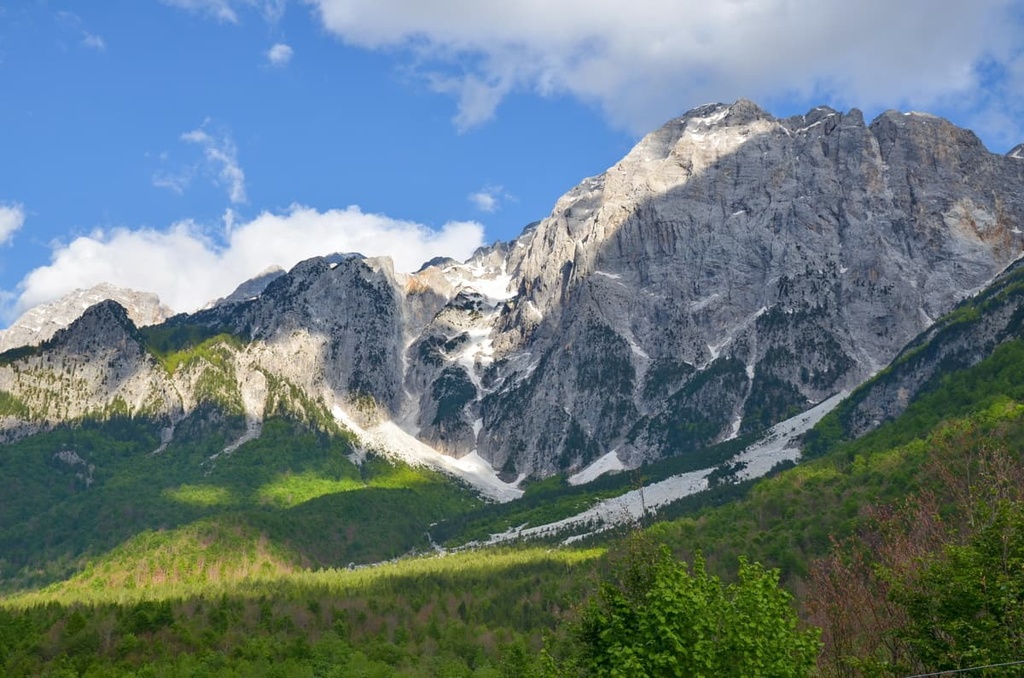
Valbona Valley National Park protects the Accursed mountains or Prokletije, which are sometimes called the Albanian Alps. From a geologic perspective, the Albanian Alps are part of the Dinaric Alps. These peaks are also protected in other nearby areas such as Prokletije National Park in Montenegro and Bjeshkët e Nemuna National Park in Kosovo.
The park is situated in a very remote location and is relatively small, though it features a dense variety of ecosystems and climatic conditions. This creates the perfect habitat for a diverse array of flora and fauna to thrive. In fact, most of the park (approximately 89 percent of its total area) is forested.
Valbonë Valley National Park encompasses the southernmost continuation of the Dinaric Alps, including some of the Albanian Alps. The Valbonë River flows through Valbona Valley, and it is surrounded by a number of beautiful mountain peaks, such as Maja e Jezercës (2,694 m/ 8,838 ft) and Maja Kollatës (2,552 m/ 8,372 ft).
This park is actually Albania’s largest protected area, as it covers the valley of Valbona as well as the Prokletije or Bjeshkët e Nemuna mountain range. The inhabitants of this surrounding area fondly call it the ‘miracle of the Alps.’

The closest town to the park is Bajram Curri, which is home to the villages of Rrogam, Valbona, Dragobi, and Çerem. Furthermore, part of the park is protected under the special UNESCO Primeval Beech Forests of the Carpathians and Other Regions of Europe designation. Forbes has also identified Valbona National Park as one of the Western Balkan countries’ most beautiful places to visit.
Albania is a small country in the Balkans. It is bordered by Montenegro to the north, Kosovo and Macedonia to the east, and Greece to the south. The Albanian Alps are one of Albania's most impressive and notable topographic features.
These peaks are, geologically, the southernmost continuation of the Dinaric Alps, which forms a section of the Alpine-Himalayan orogenic belt. This orogenic belt extends from the Atlantic Ocean in the west to Tibet in the east.
The topography of the park is mountainous as it features many steep slopes, high ridges, and deep river valleys. The Albanian Alps are home to some of the highest elevation sections of the Dinaric Alps.
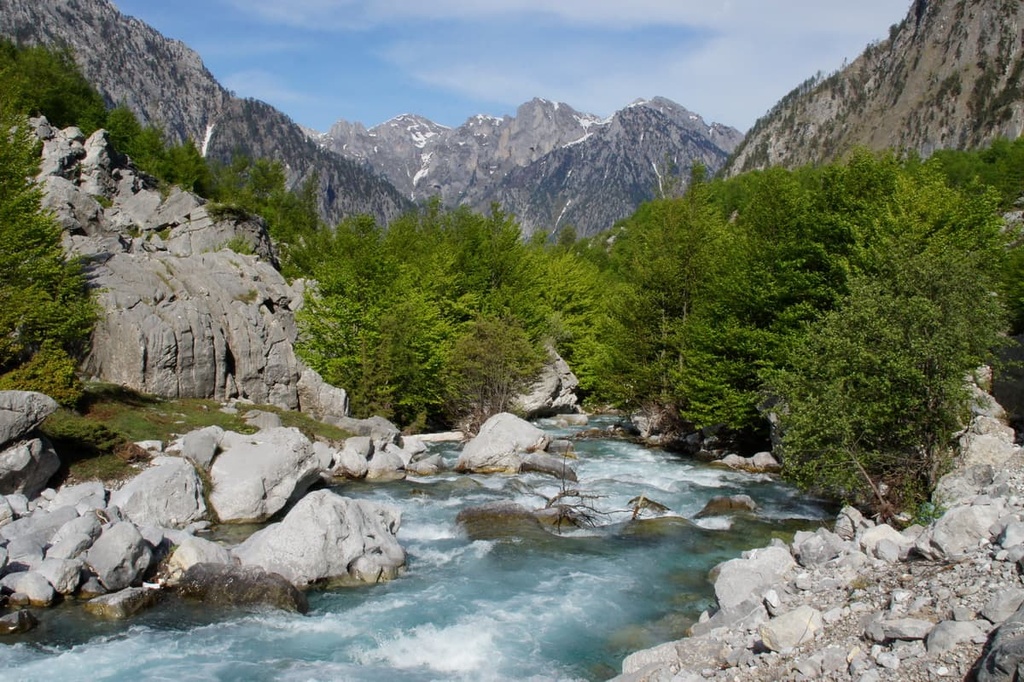
Geologically, the Dinaric Alps are quite diverse, and the mountains here have a lot of different formations. Limestones and dolomites that date back to the Mesozoic are widespread in the region, as are outcroppings of bauxite, which contains a high content of aluminum. As a result of the region’s substantial limestone and dolomite bedrock, the park features typical karst topography.
Karst topography includes landscapes that were created by the dissolution of soluble rock. Most karst landscapes boast terrain features like caves, springs, and sinkholes.
However, the formation of the peaks in the region was the result of tectonic collision, not karstification. Here, the African and Eurasian plates collided to create the many peaks of the Dinaric Alps that we see to this day.
As far as rivers go, the Valbona River is one of the largest rivers in the region, with a length of 50 km (31 mi). It flows westward from Albania and empties into the Adriatic Sea in Montenegro. The Valbona River is the largest river in the region, and it drains all of eastern Albania.
There are also two active glaciers located close to the northeastern edge of Maja e Jezercës (2,694 m/ 8,838 ft). These are among the only glaciers in the Dinaric and Albanian Alps.
The highest peaks of Valbona Valley National Park include:
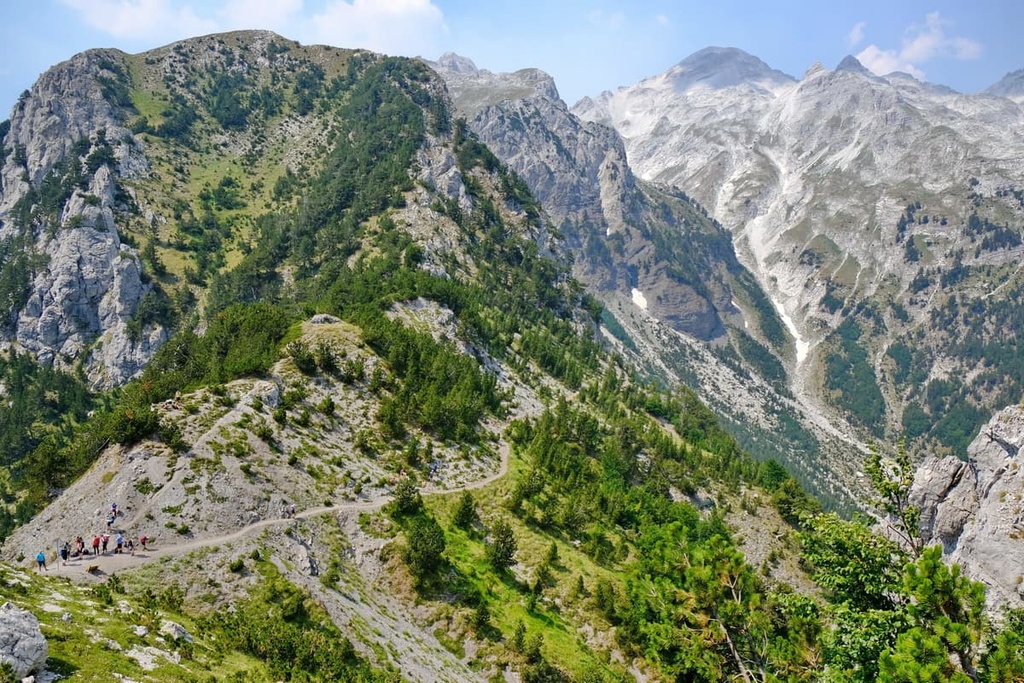
Valbona Valley National Park is relatively small, yet it offers an enormous variety of ecosystems and habitats that have given rise to a diverse range of flora and fauna. Forests, primarily those of the Dinaric Mountains mixed forests terrestrial ecoregion, dominate nearly 90 percent of the park’s total land area.
Since the park is located in the Albanian Alps, its climate is dominated by cold winters and hot summers. However, when you visit the park’s higher elevations, it's always a nice, brisk temperature. Due to how close the park is to the Mediterranean, it can get a bit hot during the summer months. The coldest periods in the park occur between late December and early February, while the hottest period is from early July to early August.
The mixed forests of the Dinarides are composed of deciduous trees such as oak, beech, ash, maple, and elm. In springtime, these trees have bright green leaves, and in autumn, they offer spectacular fall foliage with their red leaf colors.
While there are many tree species found in the park, birches and pines are the most common. The pine tree is one of the most common species found in the park. There are many types of pine found in the region, including Austrian, Bosnian, and Scots pine.
But the most notable tree species in the park is the Norway spruce. There are also forests of gray alder and olive willow, particularly near the Valbona River. There are also some patches of black pine, white pine, and goat willow around the river itself.
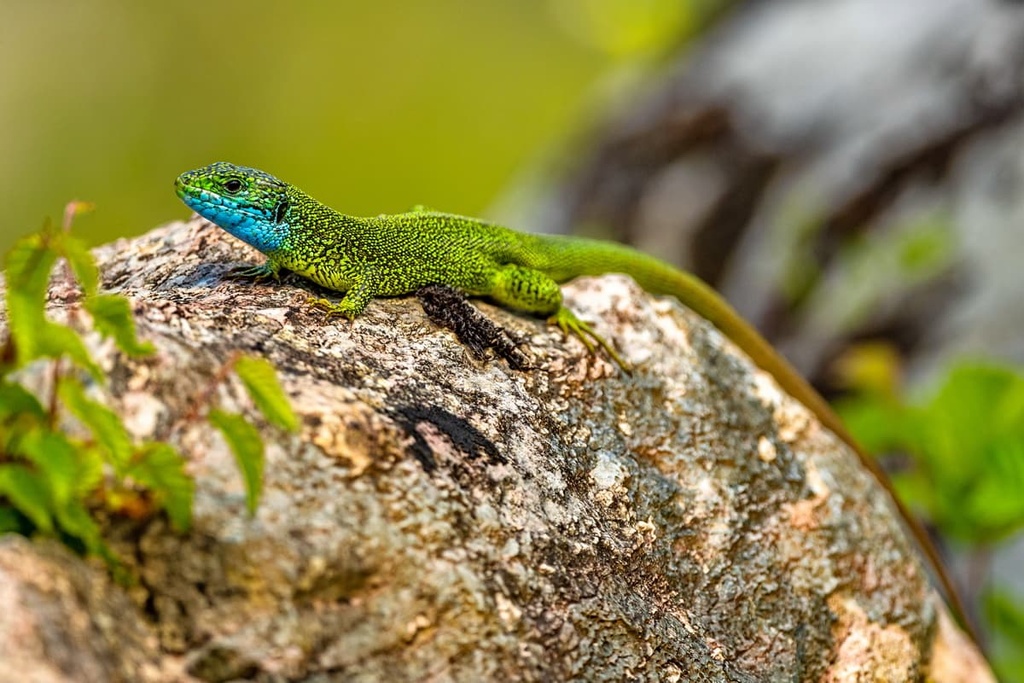
We know the park for its exceptionally rich and varied wildlife. This diversity of wildlife is a result of the park’s geography and climate, which allows it to support a variety of habitat types. The park is a crucial national wildlife preservation area and its open spaces offer many chances to see wildlife as well as brown bears and gray wolves.
One of the park's many special attractions is the existence of rare chamois at higher elevations. That said, you'd have to get lucky to spot one in its natural habitat. Valbona Valley is home to many wildlife species, also including roe deer, wild boar, and golden eagles.
The first time humans settled below the Albanian Alps was in the Neolithic period. During this time, people lived throughout the Vabona River Valley. That said, almost no archaeological evidence is visible today in Valbona Valley National Park in the Neolithic.
Ancient Albania was home to many tribes, such as the Ardiaei, Albanoi, Amantini, Enchele, and others, many of which are now collectively called the Illyrians. The region was also home to Greek communities and Thracian tribes.
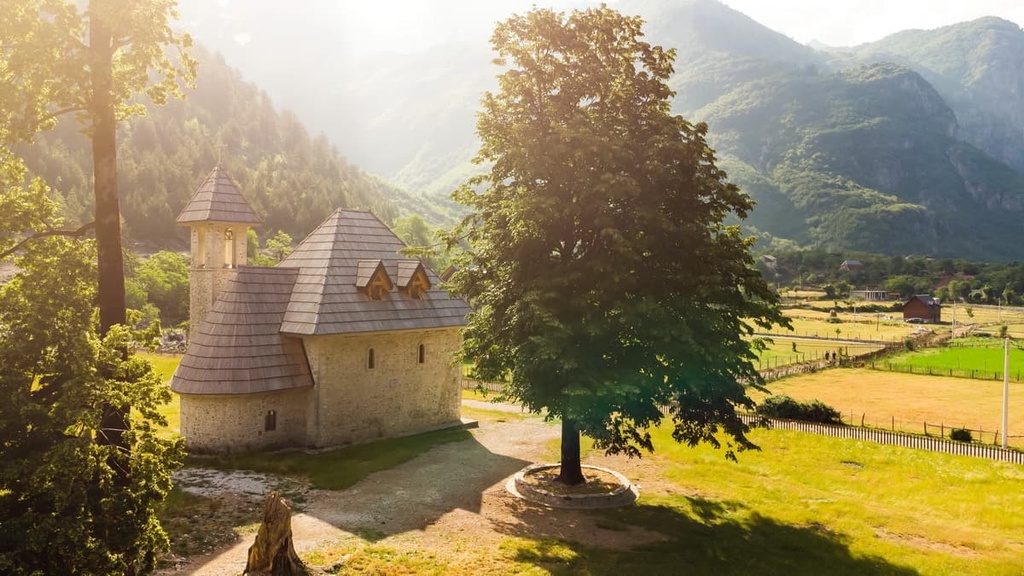
Once the Romans conquered the region and the tribes that lived in it around the third century BCE, the land that is now northern Albania became part of the Roman provinces of Dalmatia and Moesia Superior. For many centuries afterward, the territory remained under Roman and Byzantine control.
This government stood until the Slavic migrations of the seventh century. The region was later taken over by the Bulgarian Empire in the ninth century and then integrated into the kingdom of Zeta and Serbia.
The medieval period was a time of turmoil from which the medieval Kingdom of Albania emerged. This kingdom was relatively short-lived as the Ottomans took over the Balkan Peninsula soon afterward. Albania was politically part of the Ottoman province of Rumelia until 1912 when the Principality of Albania and, later, the Albanian Republic gained control.
Albania experienced many political changes before and during World War II. Throughout this period, the country was occupied by Italy and, afterward, the rise of communism in the region led to the creation of the Socialist People's Republic of Albania and the rule of Enver Hoxha.
In 1990, the Communist regime in Albania collapsed and the country became democratized. The communist party of Albania was downvoted in the elections of March 1992 amid economic instability. The crisis peaked with an incident known as “Albanian Turmoil,” or the Albanian Civil War, which followed the Yugoslav Wars.
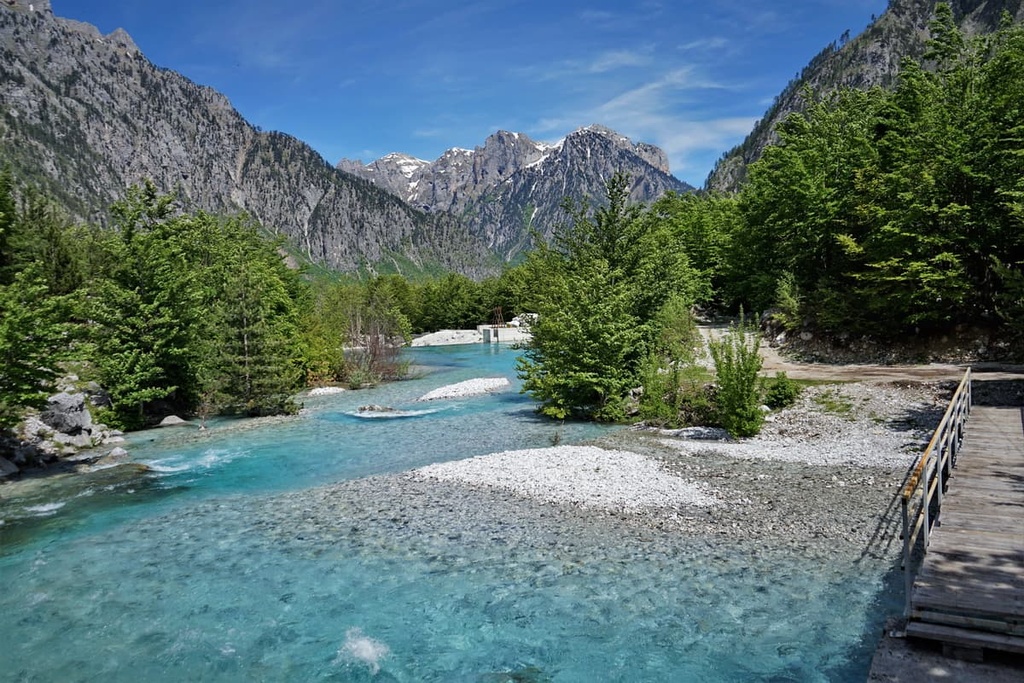
In 1929, British climbers Sleeman, Elmalie, and Ellwood were the first to reach the summit of Maja e Jezercës (2,694 m/8,838 ft). The following year, Austrian mountaineers also scaled the mountain. The peak soon became a popular place for hikers and climbers because it is one of the highest peaks in the Albanian Alps and in all of Albania.
Valbona Valley National Park was established in January 1996. The Albanian government’s goal in establishing the park was to preserve the region’s natural ecosystems, landscapes, vegetation, and biodiversity.
An expansion plan for Valbona Valley National Park, alongside the nearby Thethi National Park and Gashi Nature Reserve, is under consideration. This expansion plan would make the park the largest in Albania and one of the largest in southeastern Europe.
However, there are people who live within the park’s boundaries to this day. These include many people who are ethnically Krasniqi and Gashi, though many people have since moved out of the valley and have settled in villages in the municipality of Margegaj.

Hiking is one of the most popular activities in Valbona Valley National Park. The views that you can enjoy from the park’s trails are incredibly rewarding, and they give you a different perspective of the stunning landscape of Albania.
The Valbona Trail is quite popular, especially during summer. It takes hikers from Valbona to Thethi in just 17 km (10 mi) and has little elevation gain. This trail is a great option if you want to visit both Valbona Valley National Park and Thethi National Park.
In fact, this trail tends to be quite crowded during summer since everyone wants to see both beautiful parks. It travels through a dense forest and then takes you on a walk through gorgeous meadows. Due to its relatively flat nature, it’s a good family-friendly trail, though the length of the Valbona Trail means that it will likely take you the better part of a day to complete.
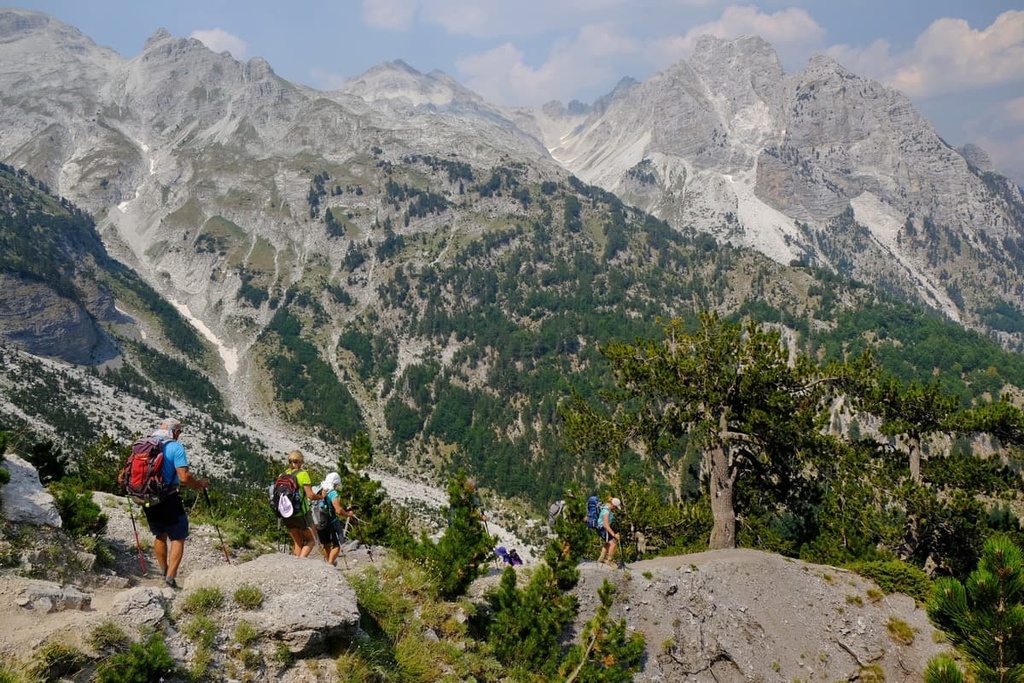
The trailhead for the Jezerca Lakes hike is located in the village of Valbona near the local school. It is a relatively strenuous hike since the elevation gain is around 1,000 m (3,280 ft). This hike takes you through meadows and rocky terrain. Once you reach the mountain hut, you will follow the trail and descend toward the lakes.
In fact, on this trail, you will have a descent of 400 m (1,312 ft), which is quite a lot of downhill hiking since the lower part of the trail itself is only 3 km (1.8 mi) long. Still, on this hike, you can enjoy the lakes and go for a swim if the weather allows. The beauty of the surrounding terrain means that this hike is absolutely worth the effort.
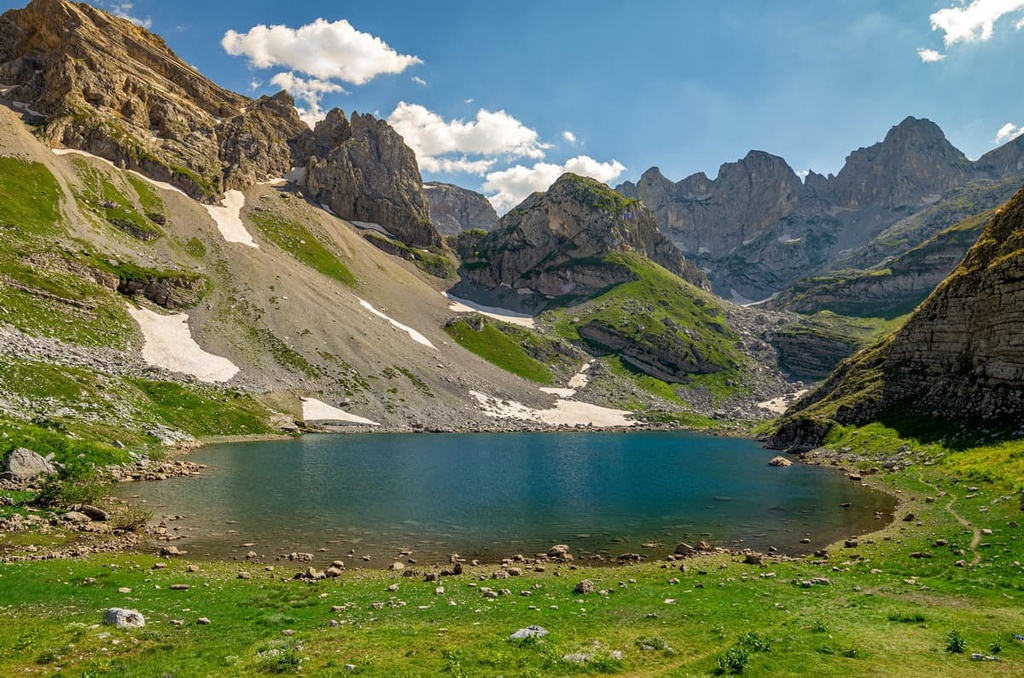
Most hikers start their hike up Maja e Jezercës (2,694 m/ 8,838 ft) from Gusinje in Montenegro. While this is the easiest route, it is still not advisable to do it without a border pass since you will be crossing from one country (Montenegro) to another (Albania). Thankfully, you can get a border pass at the police station in Gusinje.
The hike is strenuous but still worth it since you will be climbing the second highest peak of the Albanian Alps. The trail is 20 km (12 mi) long and it travels from Gusinje to the peak of Maja e Jezercës. There is almost 2,000 m (6,561 ft) of elevation gain on this trail, too, so it is not for the faint of heart.
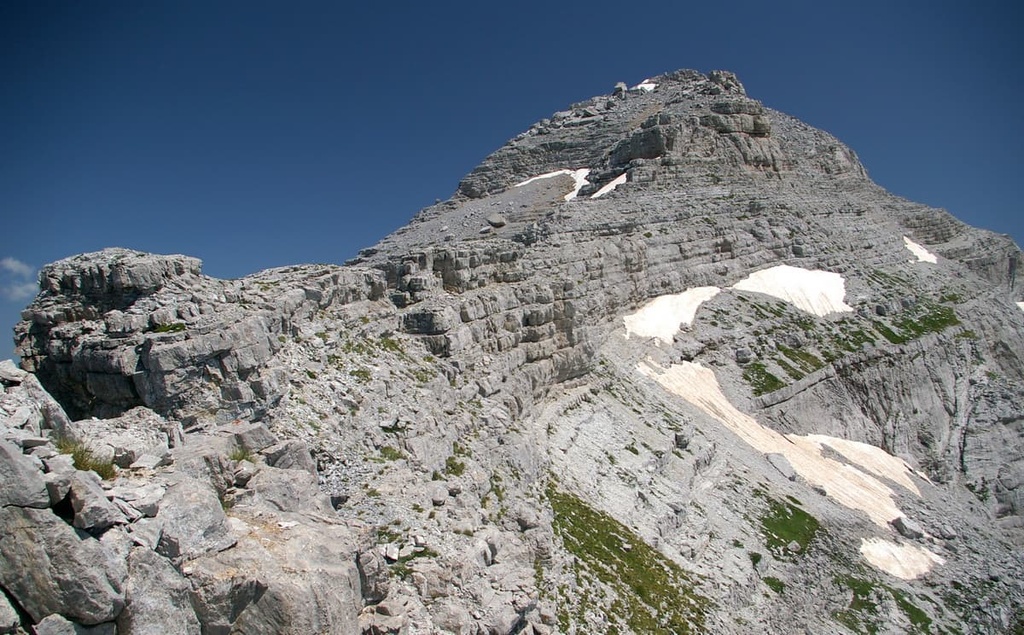
Looking for a place to stay near Valbona Valley National Park? Here are some of the best cities and towns to check out in the surrounding region.
Bajram Curri is a town in northern Albania. It became famous for its proximity to Valbona Valley National Park and for its beautiful mountain views. The town has a population of about 5,000 people, and it was founded by Ali Pasha Tepelena, an Ottoman military commander and former ruler of Albania.
The name Bajram means “the great” or “the most important.” Nowadays, you can reach the town by road and, while there, you can choose from one of many accommodation options available in the town, from campgrounds to bungalows.
Shkoder is a city in northern Albania and it is the capital of its namesake Shkodër County. The city has a population of about 130,000 people, and it has been inhabited since ancient times.
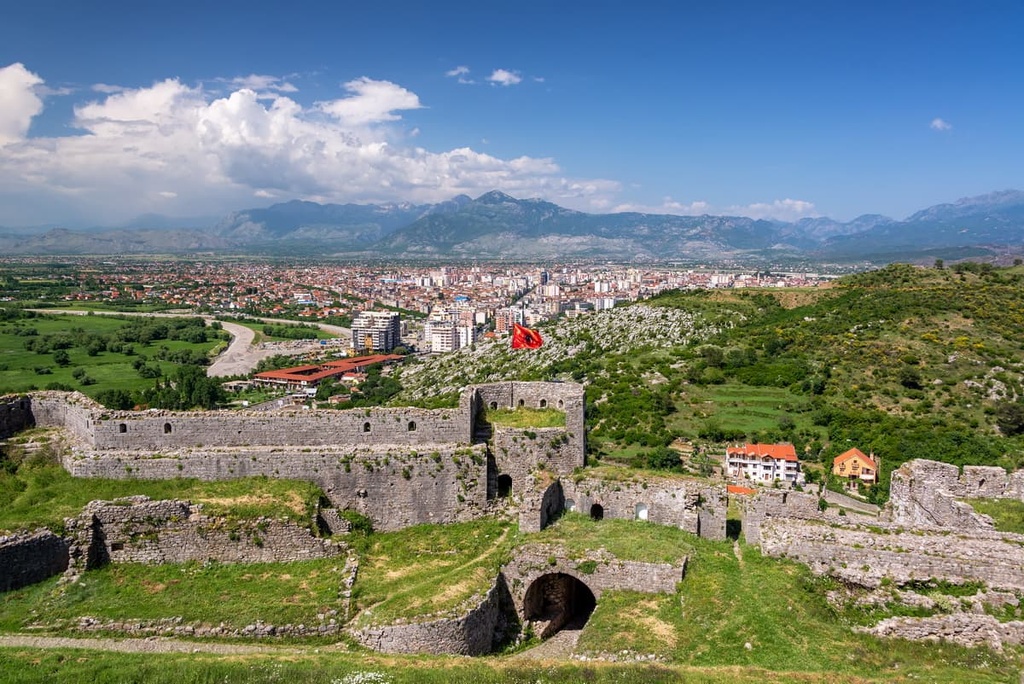
Visitors to Shkoder can visit the ruins of the old town and its numerous museums. While in the city, you can also check out the famous Shkoder Lake (also called Lake Skadar).
You can get to Shkoder by road or rail. Once in the city, you’ll have plenty of accommodation options to choose from as Shkoder is a tourist town that offers everything from upscale hotels to hostels.
Podgorica is the capital and largest city of Montenegro. It is also the administrative center of Podgorica Municipality. While Podgorica isn’t located in Albania, it is situated within driving distance of Valbona Valley National Park.
Additionally, Podgorica is a city with a rich history and culture as well as fascinating architecture. It is home to more than 150,000 residents and it is a multicultural city that’s sure to impress any visitor. Podgorica is also home to one of the largest airports in the region, so it is a good place to start your journey to Valbona Valley.
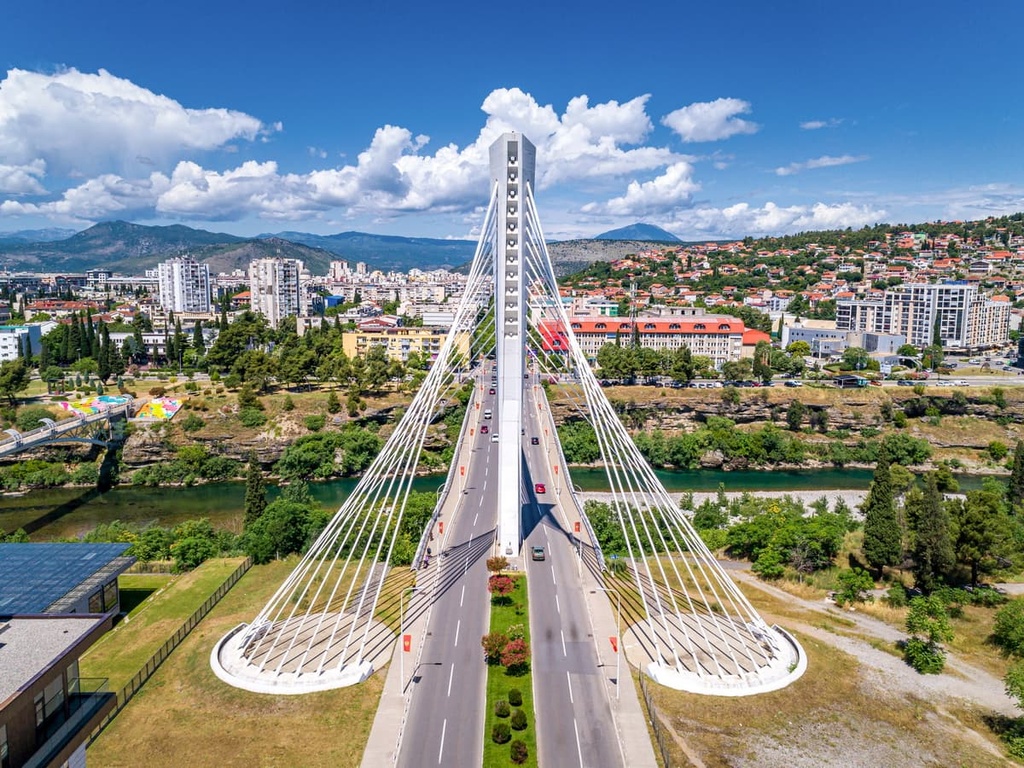
Explore Valbona Valley National Park with the PeakVisor 3D Map and identify its summits.








